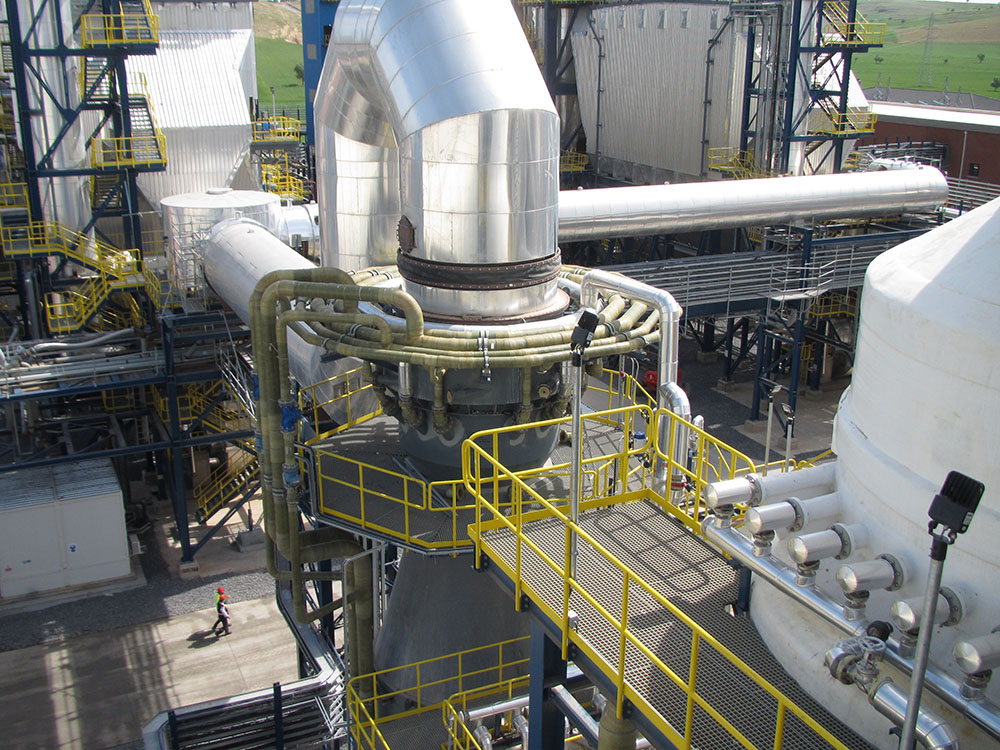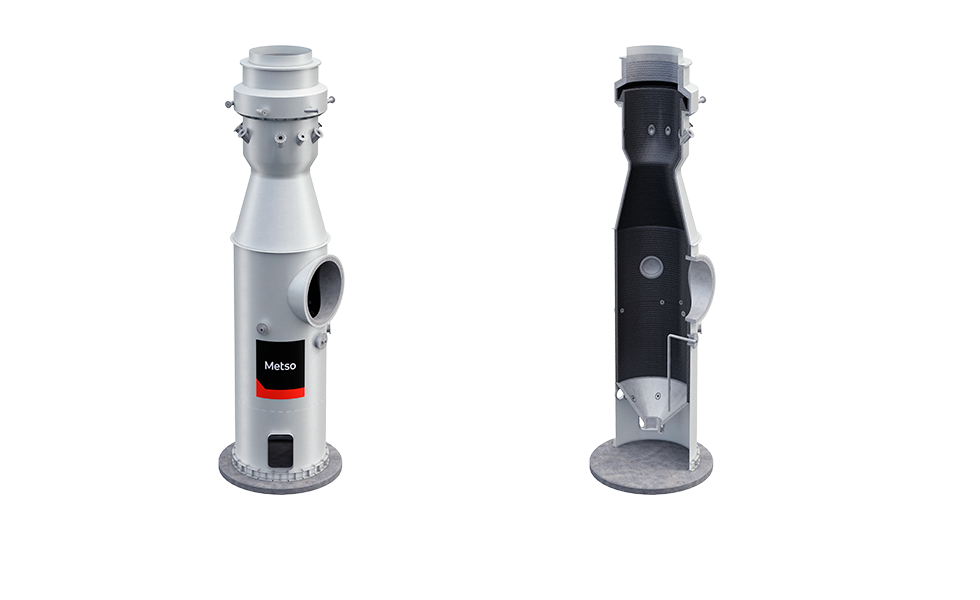High-efficiency quenching for reliable protection of downstream equipment
Off-gases must be quenched – adiabatically cooled – to saturation temperature to allow efficient removal of gaseous impurities and to protect downstream equipment against high temperatures. Due to its venturi-shaped quench zone, Metso OtoVent™ ensures intensive contact between liquid and gas, and prevents hot streaks from passing through unquenched.
Suitable for highly corrosive gases and high temperatures
Due to its robust brick lining, Metso OtoVent™ can be used for quenching corrosive gases of all kinds and is capable of withstanding temperatures up to 1200°C. The lining is customized to meet the requirements of each specific application and process.
Easy to maintain with low lifecycle costs
The overflow weir in the inlet eliminates a critical source of corrosion, increasing plant availability and reducing the need for maintenance. The overflow weir also eliminates the problem of excessive wear of the brick lining due to fluctuating operating conditions – a common issue with traditional process gas quenching systems, where the transition zone from dry and hot to wet and cold is continuously moving.
Customizable for different processes and plant arrangements
Metso OtoVent™ is available in different models to address a variety of application requirements.
The standalone version offers high quenching functionality with low maintenance requirements and a compact footprint.
The system is also available with a counter-current empty tower including a pump tank to enable longer retention times, for example for high-load arsenic feedstock applications.
Existing gas quenching systems can be upgraded with Metso OtoVent™ technology. The upgrade involves replacing the quench tower inlet nozzle – typically the weak point in counter-current quench towers – with an adapted OtoVent™ inlet section. The upgrade eliminates the need for highly cost-intensive maintenance of this critical equipment.
Metso OtoVent™ is supplied with an integrated pump tank and platforms to minimize the system’s footprint and eliminate the need for additional steel structures and support for platforms.
Typical applications
- Non-ferrous and ferrous metallurgical process off-gas treatment
- Oil and gas industry
- Chemical industry (e.g. calcination, pigment production)


